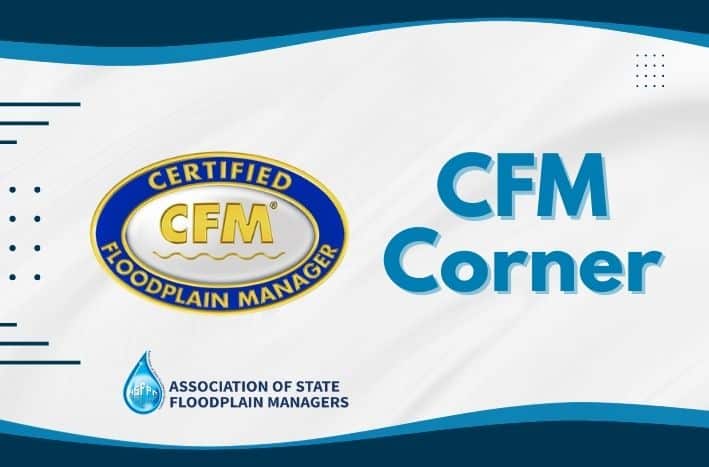Hurricane Sandy Task Force Releases Rebuilding Strategy
FLOODPLAIN MANAGERS SUPPORT HURRICANE SANDY REBUILDING TASK FORCE’S STRATEGY
August 19, 2013, FOR IMMEDIATE RELEASE
MADISON, August 19, 2013 – The Association of State Floodplain Managers (ASFPM) applauds the Hurricane Sandy Rebuilding Task Force on today’s Rebuilding Strategy with recommendations to support the resilient recovery of the region affected by last year’s storm. As the affected states, communities, families, and businesses continue to rebuild, the recommendations set forth today will help reduce the risks and costs of future floods, and provide a blueprint for flood hazard mitigation for the nation.
ASFPM is at the forefront of efforts to promote robust development and recovery standards, including investing in flood maps and data, and promoting local adoption of margins of safety, such as higher construction elevation standards and buffers along streams and shorelines, to account for uncertainties in precipitation models and flood maps. As the federal government’s partners in efforts to identify and reduce flood risk, floodplain managers throughout the nation work to anticipate and prepare the nation for changing conditions due to development and climate change. We applaud the Hurricane Sandy Rebuilding Task Force adoption of the Uniform Flood Risk Reduction Standard that provides an additional margin of safety for rebuilding damaged homes, businesses, and infrastructure, and encourage the widespread adoption of that safety standard for public investments throughout the United States. Such a uniform standard has long been needed and will pay huge dividends to property owners and taxpayers.
“The Task Force wisely addresses the need for hazard mitigation as part of recovery and rebuilding to better prepare communities for future floods,” noted Chad Berginnis, ASFPM’s Executive Director. “By laying out the strategy for collaboration across federal programs, the Task Force helps assure a well-aligned and unified federal rebuilding approach for Sandy and future flood disasters.”
The Rebuilding Strategy addresses the broad range of recovery challenges and opportunities, including infrastructure resilience, local government capacity, and flood insurance. By encouraging property owners to mitigate against future flood damage, the Rebuilding Strategy recognizes that mitigation not only reduces risk but also can reduce flood insurance premiums for families and businesses that rebuild higher, farther from flood sources, and with robust building codes and designs.
Floods are the nation’s most frequent and costly natural hazard, resulting in more Presidential Disaster Declarations than any other type of disaster, and destabilizing local and regional economies. Decades of federal flood policy have focused on structural measures to attempt to control floods and a national flood insurance program to ameliorate economic loss and discourage development in floodplains. Despite these efforts, flood losses continue to rise with inadequate attention to the local development decisions that deepen local dependence on federal disaster relief and exacerbate the nation’s vulnerability to floods. ASFPM is pleased that the Rebuilding Strategy includes actions to help communities prepare for these current and future challenges.
“While changes to flood insurance premiums enacted last year will present challenges to many homeowners, they can take steps now, with assistance, to keep their premiums more affordable.” Berginnis emphasized. “Additionally, ASFPM looks forward to working with the Administration and Congress to explore additional approaches to address affordability challenges for economically distressed homeowners who can least afford to be uninsured.” ASFPM’s policy paper on flood insurance affordability presents actions that communities and property owners can take today, as well as specific reforms for consideration by Congress.
The Association of State Floodplain Managers (ASFPM) is an organization of professionals involved in floodplain and flood risk management, flood hazard mitigation, flood data analysis and sharing, flood mapping, the National Flood Insurance Program, and flood preparedness, warning and recovery. ASFPM has 35 chapters and more than 15,000 members working to reduce the risk of loss of life and property in flood disasters, and to restore and protect naturally functioning floodplains. For more information, please visit us at https://www.floods.org/.
###
Media Contact:
Diane A. Brown
ASFPM Outreach and Events Manager
diane@floods.org, 608-444-6707
Association of State Floodplain Managers (ASFPM)
575 D’Onofrio Drive, Madison WI 53719
608-828-3000

